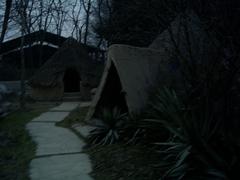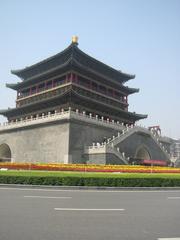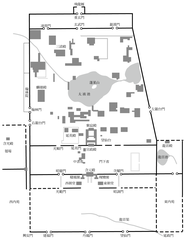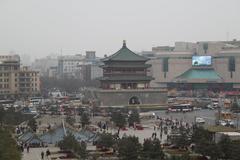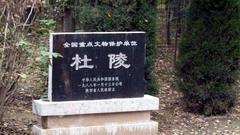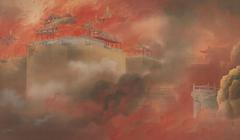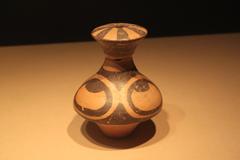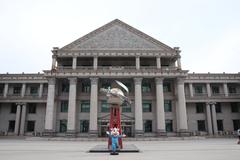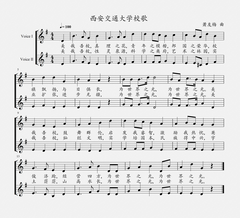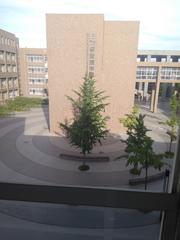
Daci’en Temple Xi’an: Visiting Hours, Tickets, and Historical Guide
Date: 14/06/2025
Introduction
Nestled in Xi’an, one of China’s most historic cities, Daci’en Temple (大慈恩寺) is a celebrated center of Buddhist heritage and Tang Dynasty culture. Most renowned for the iconic Big Wild Goose Pagoda (大雁塔)—a UNESCO World Heritage Site—this complex is a testament to centuries of religious devotion, imperial patronage, and cross-cultural exchange along the Silk Road. Whether you’re a history aficionado, spiritual seeker, or cultural traveler, Daci’en Temple offers a profound window into China’s ancient legacy.
This guide covers everything you need to plan your visit: historical background, visiting hours, ticketing, accessibility, travel tips, and surrounding attractions, ensuring a complete and rewarding experience (Catbird in China; chinatripedia.com; thenomadvisor.com).
Historical Overview and Significance
Foundation and Tang Dynasty Patronage
Daci’en Temple was founded in 648 CE during the Tang Dynasty by Emperor Gaozong to honor his mother, Empress Zhangsun. The name “Daci’en” means “Great Mercy and Kindness,” reflecting the Buddhist virtues the temple was built to embody (Xi’an Deep Tour). At its peak, the temple was a vast monastic complex, housing hundreds of monks and serving as a major center for Buddhist teaching and translation.
Xuanzang and the Buddhist Translation Movement
The temple’s legacy is inseparable from the monk Xuanzang (玄奘), who embarked on an epic pilgrimage to India in 629 CE, returning after 17 years with hundreds of Buddhist scriptures and relics. Xuanzang became Daci’en’s first abbot and established a translation bureau, leading a team that translated over a thousand volumes of scriptures into Chinese—an effort instrumental in shaping Chinese Buddhist doctrine (Catbird in China). His journey inspired the classic novel Journey to the West.
The Big Wild Goose Pagoda
Constructed in 652 CE under Xuanzang’s supervision, the Big Wild Goose Pagoda was built to house Sanskrit scriptures and relics. Its seven-story, 64-meter-high (210 ft) structure is modeled on Indian stupas and remains one of Xi’an’s most recognizable landmarks (thenomadvisor.com).
Later History and Modern Recognition
Daci’en Temple endured cycles of decline and restoration through successive dynasties. Significant repairs in the Ming and modern eras preserved its core structures. In 2014, the Big Wild Goose Pagoda and associated sites became part of the “Silk Roads: the Routes Network of Chang’an-Tianshan Corridor” UNESCO World Heritage Site (wikipedia).
Architectural and Artistic Highlights
- Big Wild Goose Pagoda: The architectural centerpiece, climbable for panoramic city views.
- Mahavira Hall: Main worship hall enshrining Buddha statues and adorned with Tang Dynasty murals.
- Bell and Drum Towers: Flanking structures used in traditional ceremonies.
- Sutra Library: Houses scriptures translated by Xuanzang.
- Gardens and Courtyards: Cypress trees, ponds, and tranquil walkways ideal for reflection.
- Stone Steles: Inscribed with calligraphy and historical records.
- Xuanzang Memorial Hall: Dedicated to Xuanzang’s life and translation work.
Visiting Hours & Ticket Information
Opening Hours
- March–October: 8:00 AM – 6:30 PM
- November–February: 8:00 AM – 6:00 PM
- Last entry is typically 30–60 minutes before closing.
Tickets and Admission
- Temple Grounds: 50 RMB per person
- Climb Big Wild Goose Pagoda: 30 RMB per person (separate ticket)
- Combined tickets may be available; check at the ticket office or online.
- Discounts: Children under 1.2 meters free; student and senior discounts with valid ID.
- Purchase: On-site or online (advance e-tickets recommended during peak seasons).
Accessibility and Facilities
- Wheelchair Accessibility: Most temple grounds are accessible; the pagoda itself has steep, narrow stairs and is not accessible by wheelchair.
- Facilities: Clean restrooms, gift shops, tea houses, and lockers for large bags.
- Guided Tours: English-speaking guides and audio guides are available.
- Safety: Security screening at entrance; lost and found near the main gate.
Travel Tips
- Best Times: Weekday mornings in spring and autumn to avoid crowds.
- Dress Code: Modest attire; cover shoulders and knees, remove hats in halls.
- Photography: Allowed outdoors; check signs for restrictions inside.
- Duration: Allow 2–3 hours for a thorough visit.
- Payments: Cash and Chinese mobile payments accepted; international cards less common.
- Language: English signage is available, but translation apps can be helpful.
Getting There
- Address: Da Ci’en Temple, Yanta District, Xi’an (西安市雁塔区大慈恩寺内)
- By Metro: Line 3 to Dayanta Station, short walk to the temple.
- By Bus/Taxi: Multiple bus routes serve the area; taxis are convenient.
On-Site Highlights and Events
- Climb the Pagoda: Enjoy panoramic city and temple views from the top.
- Temple Museum: See relics and artifacts from the Tang Dynasty.
- Gardens: Stroll through lush courtyards and pavilions.
- Music Fountain Show: Evening light and water displays at the North Square.
- Festivals: Buddhist holidays, lantern festival, and memorial ceremonies for Xuanzang.
- Cultural Performances: Traditional music and dance in the adjacent square (thenomadvisor.com).
Nearby Attractions
- Shaanxi History Museum: Extensive regional history collections.
- Xi’an City Wall: Ancient fortifications ideal for walking or cycling.
- Muslim Quarter: Vibrant street food and cultural scene.
- Bell and Drum Towers: Central city landmarks.
Dining and Accommodation
- Food: Local Shaanxi cuisine available at nearby restaurants and food stalls.
- Tea Houses: Relax with a view of temple gardens.
- Accommodation: Range from budget hostels to luxury hotels in Yanta District.
FAQs
Q: What are the Daci’en Temple visiting hours?
A: 8:00–18:30 (March–October), 8:00–18:00 (November–February).
Q: How much are tickets?
A: 50 RMB for temple grounds; 30 RMB for the pagoda climb.
Q: Is the pagoda wheelchair accessible?
A: The grounds are accessible, but the pagoda has steep stairs only.
Q: Are guided tours available?
A: Yes, in English and Mandarin; book on-site or in advance.
Q: When is the best time to visit?
A: Spring or autumn weekday mornings for fewer crowds and pleasant weather.
Practical Visitor Checklist
- Bring ID for discounts
- Wear comfortable shoes
- Arrive early for best experience
- Check official website or app for current events and updates
- Respect local customs and temple etiquette
Visuals and Online Resources
- Images: Use alt text such as “Big Wild Goose Pagoda at Daci’en Temple in Xi’an” for SEO and accessibility.
- Virtual Tours: Explore the temple online before your visit.
- Official Website: Xi’an Daci’en Temple
Summary and Recommendations
Daci’en Temple is an essential stop for those seeking to understand Xi’an’s pivotal role in Chinese Buddhism, Tang culture, and Silk Road exchange. Its tranquil gardens, Tang-era architecture, and the storied Big Wild Goose Pagoda offer a rich blend of history and spirituality. Complement your visit with nearby historical attractions to fully appreciate the city’s cultural tapestry. For real-time updates, guided tours, and digital resources, download the Audiala app and follow official tourism platforms.
Sources and Further Reading
- Daci’en Temple in Xi’an: Visiting Hours, Tickets, and Historical Insights (Catbird in China)
- Daci’en Temple Tickets, Opening Hours, Highlights and Tips (chinatripedia.com)
- Best Things to Do in Xi’an (thenomadvisor.com)

